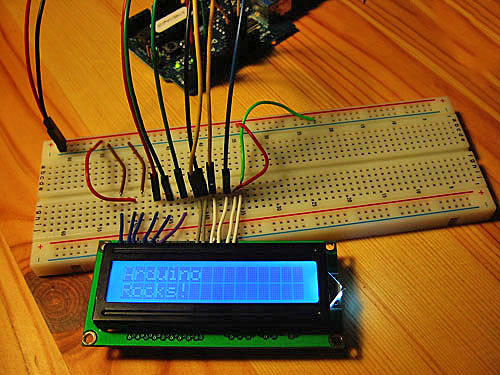Appearance
Dark Light
Did You Know?
Conventional farmers use around 300 different pesticides to grow foods that are sold in supermarkets everyday.

Arduino LCD
The Arduino LiquidDisplay library lets you control Hitachi HD44780 compatible LCDs. These are inexpensive displays that are quite common. (I got mine from eBay, $3-5 each). This project uses a 2x16 LCD.Parts:
- 1 Arduino micro-controller
- 1 HD44780 compatible LCD (2x16)
- 1 solderless bread-board (for prototyping)
- Jumper wires

The LCD can be driven with either 4 or 8 data pins. If using 4, the first 4 pins can be ignored (DB0-DB3). The LiquidDisplay() constructor takes a number of parameters:
LiquidCrystal(rs, rw, enable, d4, d5, d6, d7) - rs: the Arduino pin that connects to the RS pin on the LCD
- rw: the Arduino pin that connects to the RW pin on the LCD
- enable: the Arduino pin that connects to the E pin on the LCD
- d4-d7: the 4 Arduino pins that connect to DB4-DB7 pins on the LCD
| LCD | Arduino |
| 1 (GND) | GND |
| 2 (VDD) | 5v |
| 3 (VO/Contrast) | GND |
| 4 (RS) | 2 |
| 5 (RW) | 3 |
| 6 (E/enable) | 4 |
| 11 (DB4) | 9 |
| 12 (DB5) | 10 |
| 13 (DB6) | 11 |
| 14 (DB7) | 12 |
| 15 (BL1/Backlight1) | 5v |
| 16 (BL2/Backlight2) | GND |
Code
#include
LiquidCrystal lcd(2,3,4,9,10,11,12);
void setup() {
lcd.begin(16,2);
lcd.setCursor(0,0);
lcd.print("Arduino");
lcd.setCursor(0,1);
lcd.print("Rocks!");
}
void loop() {
delay(5000);
}
For more info, see: LiquidCrystal Library
